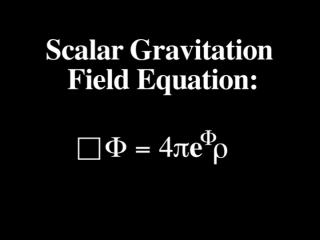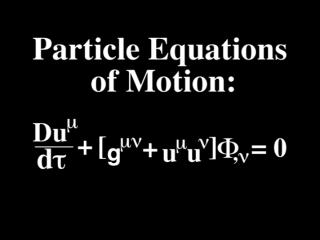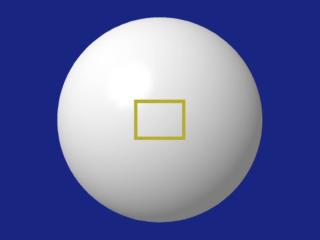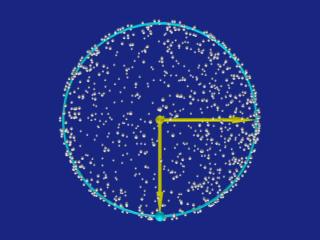
|
This entire calculation is performed in relativistic scalar gravitation. While scalar gravity is not the correct theory of gravitation, it is conceptally much simpler than general relativity, and it shares many of the characteristic features. The field equation is given by:

|
Note that the exponential term on the right side of the equation makes the field equation nonlinear. The particle (geodesic) equations of motion are:

|

In this next movie, we trace out the orbit of one of the particles (depicted in blue). Note the particle's orbit is confined to a plane.

Next we cut back the velocity of all of the particles in the shell to 70% of the circular velocity. The particles now rotate in precessing ellipses. The net effect of all the particles' motion is to cause the spherical shell to oscillate. The sphere oscillates between the apocenter radius and pericenter radius of the (nonclosed) elliptical orbits of the particles. In this next movie we follow the same particle as it traces out its new elliptical path.

Note that although the shell is spherically symmetric, such a configuration radiates gravitational waves in scalar gravitation, damping the oscillation of the shell. The angular momentum of each particle is conserved however. The final equilibrium state corresponds to a spherical shell at rest with all of the particles moving in circular orbit with the same (conserved) angular momentum as they had at t=0 but with lower energy.